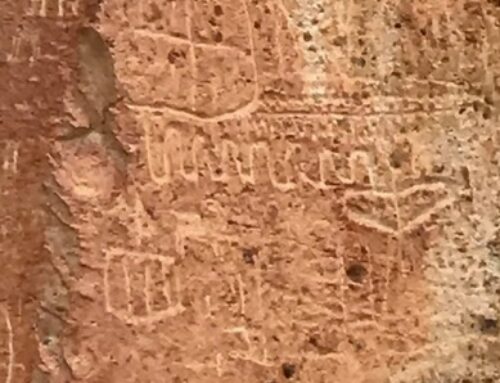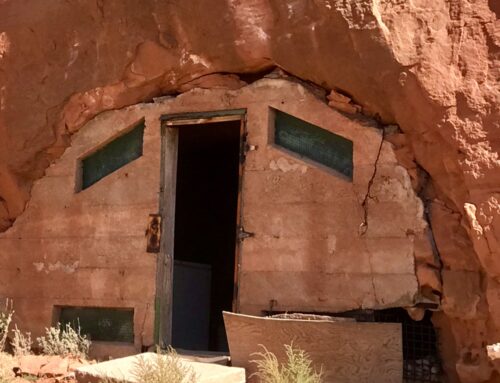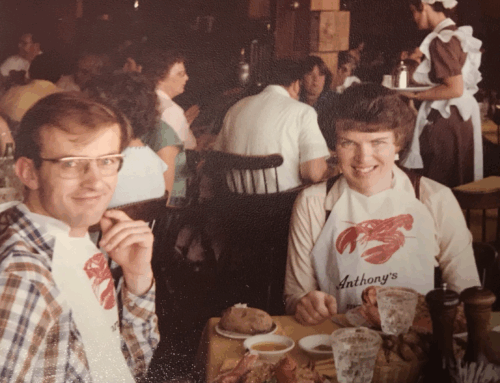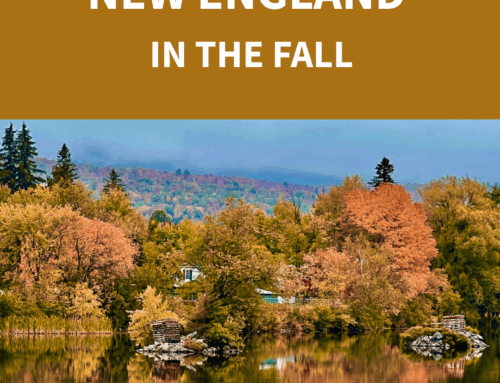I was raised in Monticello, Utah, on the Utah side of the four corners where New Mexico, Arizona, Colorado, and Utah all meet. In this area, sixty years before I was born, the original Mormon pioneers crossed some of the most torturous terrain that you can imagine.
Every time a parade went by or a history event about the area was commemorated, people would talk about these most courageous people who survived for six months as they crossed some of the toughest challenges ever put before a group.
Brigham Young sent group of people all over the west to settle and develop the country. It had been more than 30 years since the pioneers came into the Salt Lake Valley , but no one had settled the southeast part of Utah . A group of pioneers from the central part of the state were asked to go down and settle this area. For them it was a calling, and they were eager to migrate to this new country. Little did they know what would await them!
After several scouts went out, the group decided they would go down and cross the Colorado River at a place called Hole in the Rock.
As a young river runner, I had the opportunity to run the Colorado river in 1962, just before the Glen Canyon Dam would back up the water and turn this pristine country into Lake Powell . I remember as a 17-year-old hiking to the top of Hole in the Rock. I was almost more than one could imagine how the pioneers could possibly have brought their wagons down over this steep wedge in the wall.
Last week I set out with a group of Jeepers from Monticello to experience this country so that I could better understand the challenges the pioneers faced. We started out at 9 in the morning and did not get to the river until 10. We jeeped 30 miles in nine hours and then had to walk in five more miles to the houseboat where we were to stay the night.
It was not long before we were asking the jeep to do almost the impossible. My red jeep just could not get up this steep ledge and had to be pulled up by one of the other jeeps.
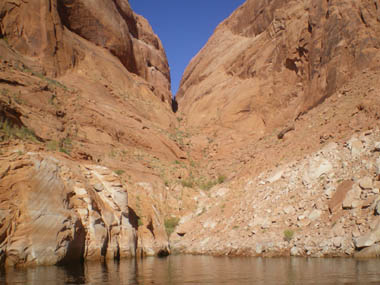
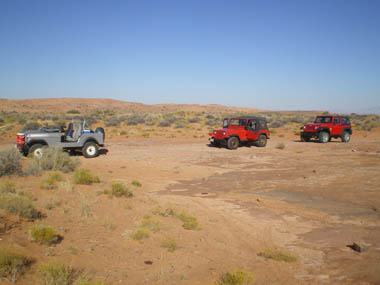
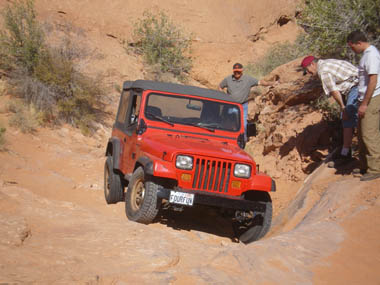
Once we all were successful in getting up the steep wall, we stopped for lunch while Lyle Andersen, our leader, pointed out the steep side of the canyon the pioneers had blasted out so that they could bring their wagons down with their animals. Anderson said that the scout had to follow some mountain sheep that led them off from Gray Mesa down into the valley in order to find a way of the top of the mesa. I could only scratch my head and say I could hardly believe that it could be possible to bring wagons down this steep way.
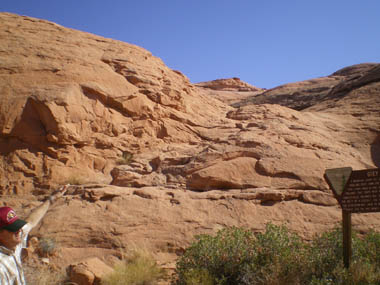
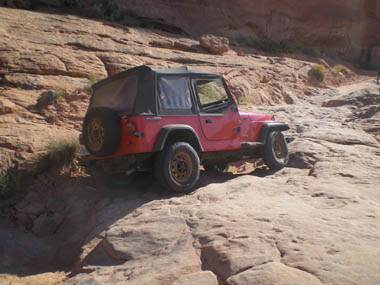

Jeff told us about the next challenge which was called “The Shoot.” We could only imagine it was another near impossible descend. It was not long before we were holding on for dear life and hoping we would soon get to the end.
It was six p.m. when we reached the top of the trail, where we would have to walk about 5 miles to get down to out houseboat at Lake Powell . About four hours later we reached the party who were sent to pick us up. We were never so excited to see anyone. They transported us in a small boat to the houseboat where we had a delicious meal waiting for us.
As we sat around the table all we could say was, “I just cannot imagine what the pioneers went through to get across this next-to-impossible terrain.” It took them six months to go some 150 miles.
Not long after we left the steep wall, the jeeps were directed up a side of the hill that seemed almost as bad as the one my jeep couldn’t climb. They had to keep climbing up the sheer sandstone rock. This was so steep that I decided I could relax and enjoy more walking. There were even times I wondered if we could get out alive.
Jeff Frost, the driver of my jeep, said that once we were balanced on one wheel. I just remember praying for our lives. We said over and over that a photo or a description could not really give you the vision of how rough it was.

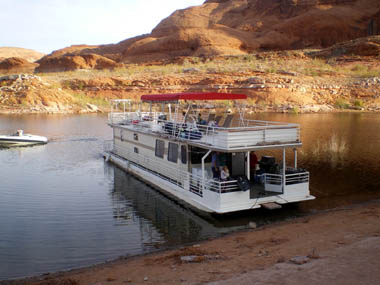

The next day we journeyed down the lake about 40 miles to a true wonder of the world, Rainbow Bridge . I could only remember my first trip down here when people with ropes would climb to the top of the bridge. Now you could not even get near the bridge because it is protected as a national monument.
Several of the people on our trip were direct descendants of the pioneers that made this journey. Laurie Redd had his two daughters, Justus and Kacie, along to teach them about the sacrifices his great-grandfather made. People who have ancestors that came through the Hole in the Rock are call “Rockers.”
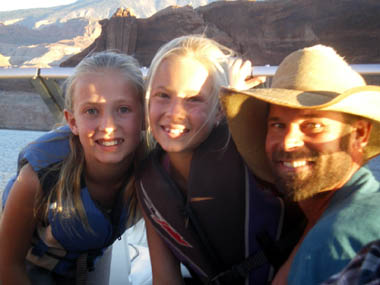
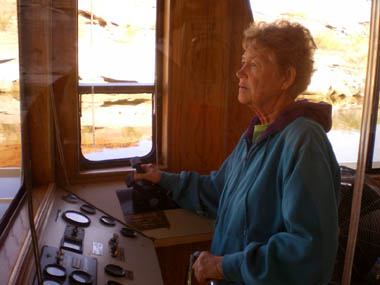
Sunny Redd was the captain of our boat. She said that she had been coming to Lake Powell since 1962. She brings her family of 10 children and 30 grandchildren every summer to relax, swim, and reflect on the journey their forefather made across this desert.
After three glorious day we caught the ferry and cross Lake Powel to return to our home with a whole new love and respect for the Pioneer that decide to leave everything they had to risk their live to cross this rugged land.
After our high adventure we took the ferry across the lake and headed home.
WOW I am truly amazed and grateful. What a beautiful world this is!



